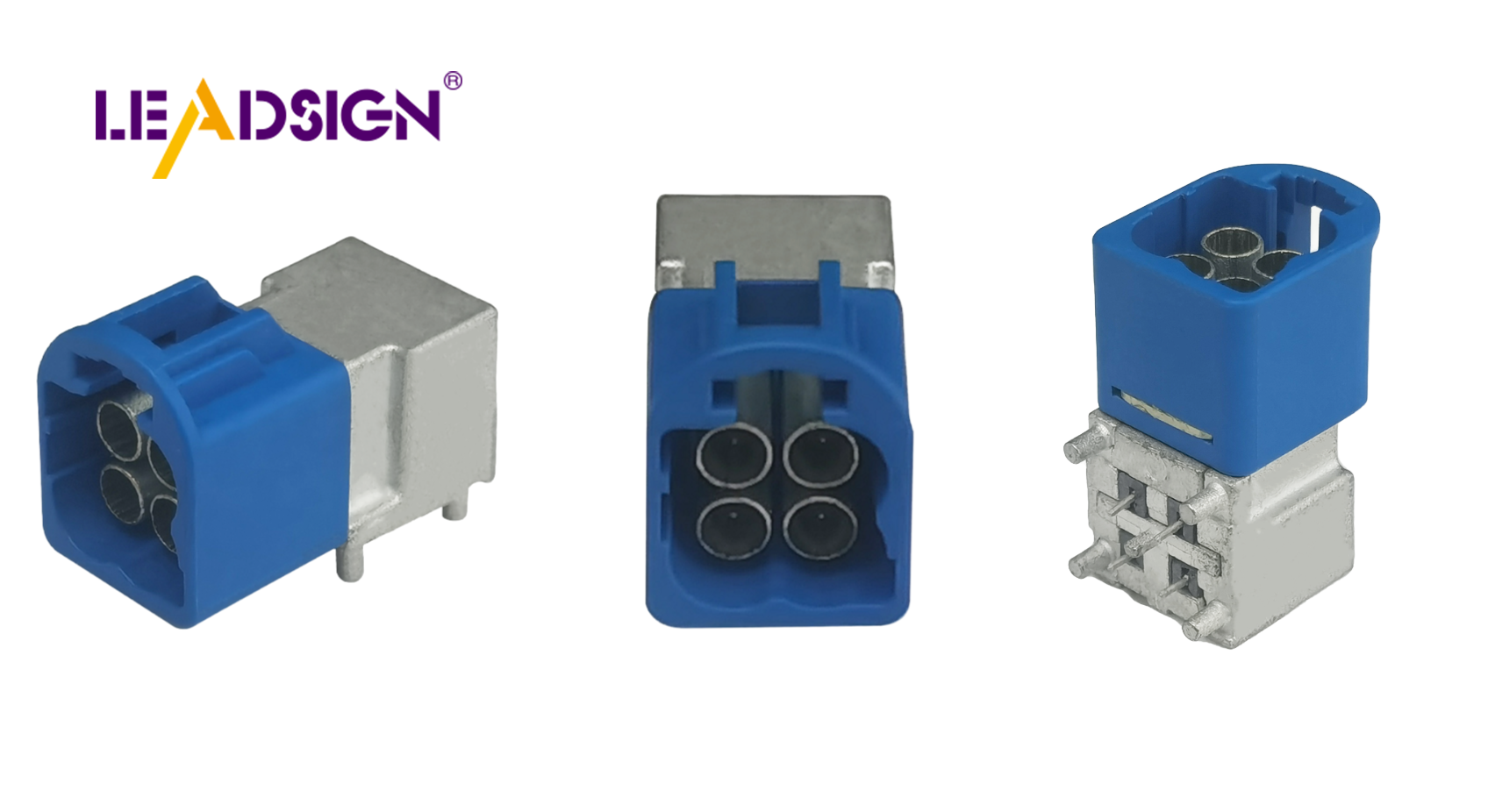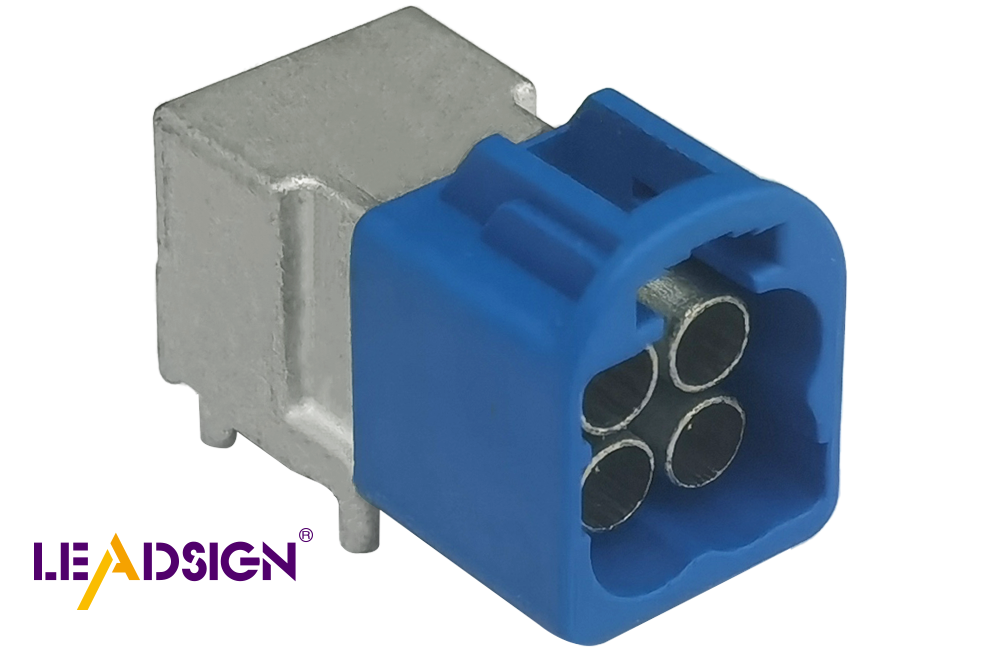Understanding Automotive Wiring Connector Types

Cars rely on various automotive electrical connectors types to function properly. These connectors play a crucial role in ensuring the safe flow of electricity, which is essential for the performance and safety of vehicles. As technology advances, connectors are becoming more compact and versatile, underscoring the significance of maintaining their high quality. Issues such as corrosion, wear, and inadequate soldering can lead to malfunctions, particularly in critical components like car wiring harnesses. Therefore, having knowledge about different automotive electrical connectors types is vital for ensuring the safety and reliability of vehicles. Implementing rigorous quality checks and tests can prevent accidents and verify that connectors meet industry standards.
Automotive Electrical Connectors Types

Automotive electrical connectors types are key parts in cars. They make sure electricity flows well and safely. Knowing different connectors helps pick the right one. This improves how things work and keeps them safe.
Blade Connectors
Blade connectors are very common in cars. They have a flat metal piece that fits into a slot.
Features and Applications
Features:
Simple with a flat metal part.
Easy to plug in and out.
Come in many sizes for different wires.
Applications:
Used often in car fuse boxes.
Good for tight spaces.
Found in home gadgets and big machines.
Advantages and Disadvantages
Advantages:
Quick to set up.
Strong connection with little resistance.
Cheap for many uses.
Disadvantages:
Can rust if not sealed well.
Carries less current than other types.
Pin Connectors
Pin connectors are also popular in cars. They have a pin that goes into a socket.
Features and Applications
Features:
Round pins for secure fit.
Used in systems with many pins.
Made from materials for tough conditions.
Applications:
Common in car wiring harnesses.
Good for sensors and control units.
Used in electronics and communication tools.
Advantages and Disadvantages
Advantages:
Strong, stable link.
Flexible with many pin choices.
Handles shaking and stress well.
Disadvantages:
Harder to put together than blade types.
Costs more due to complex design.
Butt Connectors
Butt connectors join two wires end-to-end securely.
Features and Applications
Features:
Round shape with crimp area.
Insulated to stop short circuits.
Heat-shrink versions give extra safety.
Applications:
Great for fixing or extending wires.
Often used on boats or cars.
Works well inside electric panels.
Advantages and Disadvantages
Advantages:
Gives strong, safe links.
Easy with crimp tools.
Protects against water damage or rusting.
Disadvantages: Requires good crimping for safety. Cannot handle high currents well.
Knowing these connector types helps choose wisely for needs. Each has special features making them fit various car jobs perfectly.
Ring and Spade Connectors
Ring and spade connectors are important in car electrical systems. They make sure electricity flows well and safely. Knowing about these connectors helps pick the right one, improving performance and safety.
Features and Applications
Features:
Ring Connectors: These have a round end that fits over bolts. They give a strong connection, great for places with lots of shaking.
Spade Connectors: Shaped like forks, they are easy to put on or take off without removing screws. This makes fixing things fast.
Applications:
Car Systems: Used in batteries, alternators, and starters. Their tough design keeps connections steady in key parts.
Machines: Found in big machines where circuits need plugging often.
Wire-to-Board Links: When wires connect to circuit boards, these connectors hold them tight like wire-to-wire links.
Advantages and Disadvantages
Advantages:
Strong Build: Made from materials that last long even in bad conditions.
Easy Use: Simple to install or remove, good for everyone from pros to hobbyists.
Flexible Use: Fit many types of car connectors, working with different wire sizes.
Disadvantages:
Hard to Remove Ring Types: Need full bolt removal to disconnect, which takes time.
Loose Spades Risky: If not tight enough, they might come loose causing problems.
Knowing ring and spade connector features helps choose wisely for car jobs. Each type has special perks making them perfect for certain tasks in cars or machines.
Things to Think About When Picking Connectors
Choosing the right automotive electrical connectors types means knowing some important things. These help make sure the connectors are safe and work well for the car.
Electrical Needs
Current and Voltage Levels
When picking automotive electrical connectors types, think about how much electricity they can handle. They must carry electricity without getting too hot or breaking. For example, parts like alternators need connectors that can handle more power. Matching the connector to what the system needs stops problems and keeps everything working right.
Environment Factors
The environment affects how well automotive electrical connectors types work. If they face water, dirt, or heat, they need strong protection. Ring Terminals and Spade Terminals use metals like aluminum for tight connections. This stops rust and keeps them working in tough spots. Good sealing makes them last longer.
Mechanical Needs
Strength and Material
Strength matters a lot for automotive electrical connectors types, especially in cars with lots of shaking. Using good materials like aluminum helps them last long and stay strong. The way Ring Terminals and Spade Terminals are made keeps them from coming loose by accident.
Size and Fit
Size is key when choosing automotive electrical connectors types. They should fit where needed and match with other wires easily. For instance, Spade Terminals have fork ends that make putting them on or taking them off simple, which is great for easy fixes. Getting the size right stops problems during setup.
How to Install Connectors Right
Putting in automotive electrical connectors types the right way makes them last and work well. Here, we talk about crimping and soldering, two ways to connect wires.
Crimping Wires
Crimping joins wires by squeezing them into connectors. Doing it right stops rust, wear, and bad connections.
Tools You Need
To crimp well, you need these tools:
Crimp Tool: A good tool fits the connector type for a tight hold.
Wire Stripper: This takes off wire cover without hurting it.
Heat Gun: For heat-shrink connectors, it adds more protection.
Steps to Follow
Strip Wire: Take off 1/4 inch of wire cover with a stripper.
Pick Connector: Match the connector size to the wire.
Put Wire In: Slide bare wire into connector hole.
Crimp It: Squeeze connector onto wire firmly but gently.
Check Fit: Make sure it's tight and lined up right.
Use Heat (if needed): Shrink wrap with heat gun if using heat-shrink connectors.
Crimping vs. Soldering
Both ways have good and bad sides. Knowing them helps pick the best one.
Good and Bad Points
Crimping:
Good: Fast setup, no extra stuff needed, great for shaky places.
Bad: Needs right tool choice; can be weak if done wrong.
Soldering:
Good: Strong link forever; best where things don’t shake much.
Bad: Takes time; needs solder stuff; not good for shaky spots.
When to Use Each
Choose Crimping: Best for cars where shaking happens often. It's easy and flexible.
Choose Soldering: Great for still places needing strong links. Gives top electric flow.
Fixing Common Connector Problems
Finding Bad Connections
Car connectors can break, causing electrical problems. Spotting bad connections is key to keeping cars safe and working well.
Signs of Bad Connections
Power Loss Sometimes: Devices might lose power now and then. This shows a loose or rusty connection.
More Resistance: Bad connections make resistance go up. This can cause things to get too hot and might start fires.
Weird Noises or Smells: Buzzing sounds or burning smells mean electrical trouble.
Parts Not Working: Flickering lights or sensors not working right point to connector problems.
Expert Tip: "Solder mistakes, like holes and cracks, on connector parts can stop electricity flow and raise resistance." This makes things overheat and could start fires, so fixing these issues fast is important.
Tools for Checking
Multimeter: Checks voltage, current, and resistance to find electrical problems.
Circuit Tester: Sees if circuits have power.
Look Closely: Finds damage or rust on connectors.
Fixing or Changing Connectors
After finding a bad connection, decide to fix it or change it.
Fix vs. Change
Fix: Good for small problems like loose bits or little rust. Tighten or clean the connector to fix it.
Change: Needed when connectors are badly broken, rusty, or have big solder mistakes. Changing them keeps things safe and reliable.
Expert Tip: "Mistakes often happen because people push too hard on connectors." Putting them together right stops many problems.
How to Fix Step-by-Step
Turn Off Power: Always turn off the car before working on wires.
Check the Connector: Look for damage, rust, or loose bits.
Clean It Up: Use cleaner spray to remove dirt and rust.
Tighten Everything: Make sure all parts are tight and in place.
Test It Out: Use a multimeter to check if it's working right.
Put Back Together & Test Again: Turn the power back on and see if it works now.
By knowing these ways to fix things, people can solve common connector troubles easily, making sure car systems stay safe and work well.
Choosing the right car wiring connector is very important. Each kind of connector has special features and benefits. It's key to match them with the right jobs. Picking correctly stops problems like bad contacts or broken connections. This can stop things from not working. By knowing how to choose connectors, people can keep devices safe and working well. Knowing about connectors makes cars safer and better. It helps make driving smoother and more reliable.
See Also
Exploring HSD Connectors in Automotive Technology
Significance of Fakra Connectors in Contemporary Cars
Navigating Ford's Fakra Connector System

